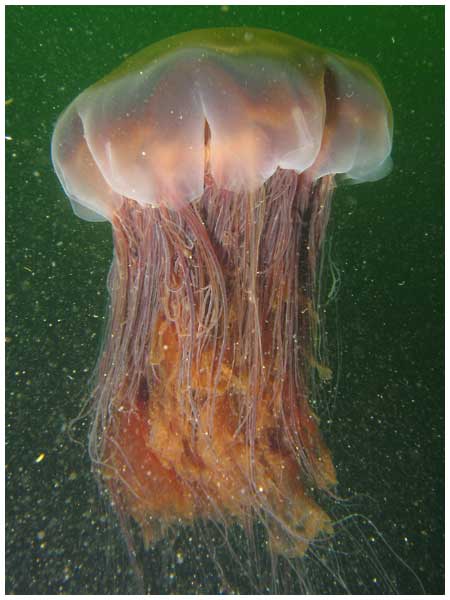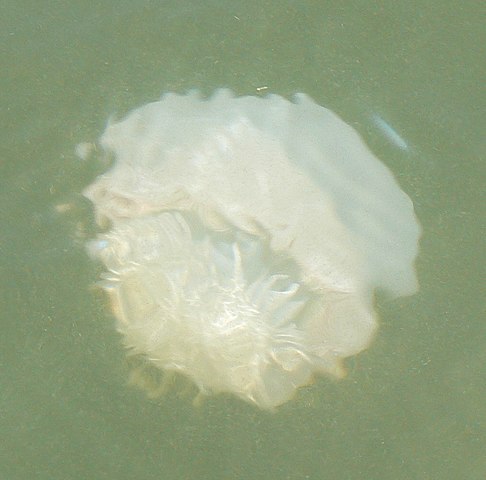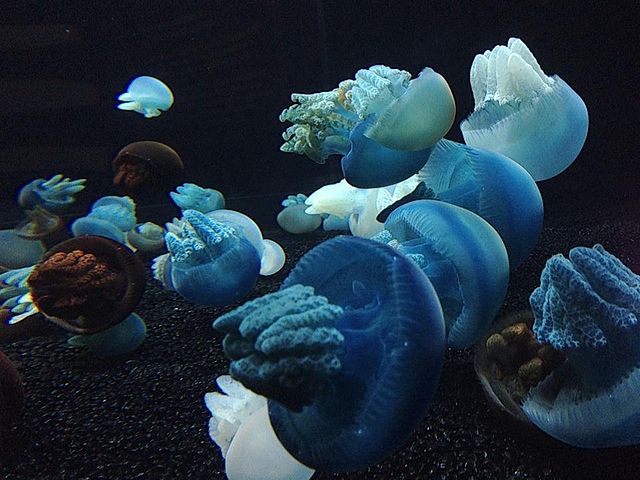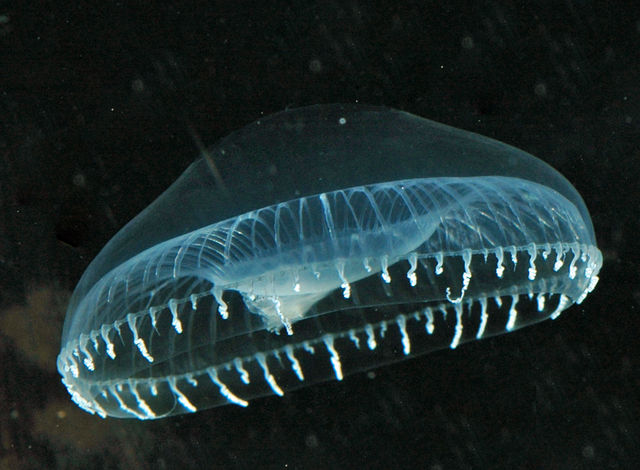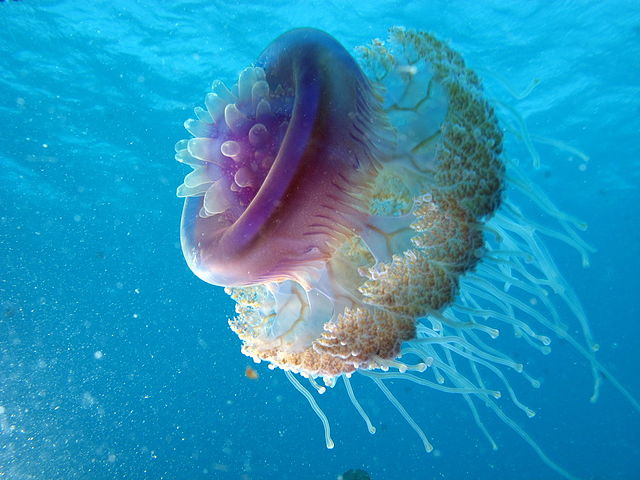We just learned about the Lobed Comb Jellyfish that lights up like a rainbow.
Another type of jellyfish is the White Spotted Jellyfish, also called the floating bell, Australian spotted jellyfish, or phyllorhiza punctata.
This type of jelly started out living in warm water in the Pacific ocean by Australia and Japan, but has now been found all the way over by California, and even in the Gulf of Mexico.
It grows to about 20 inches wide, and does have a sting but it doesn't really hurt humans.
They swim in large groups with other white spotted jellies, and because of this they can be harmful to other life in the ocean.
In their groups they swim along and eat all of the tiny little things like zooplankton, or eggs of crabs, shrimp or fish.
They also clog up the boat motors and cause problems with ships on the sea.


(from: wikipedia - phyllorhiza punctata)
(from: youtube - Underwater Beauty: Spotted Jellies - Shedd Aquarium)
Kid Facts - Blast from the past: Giant Cuttlefish








